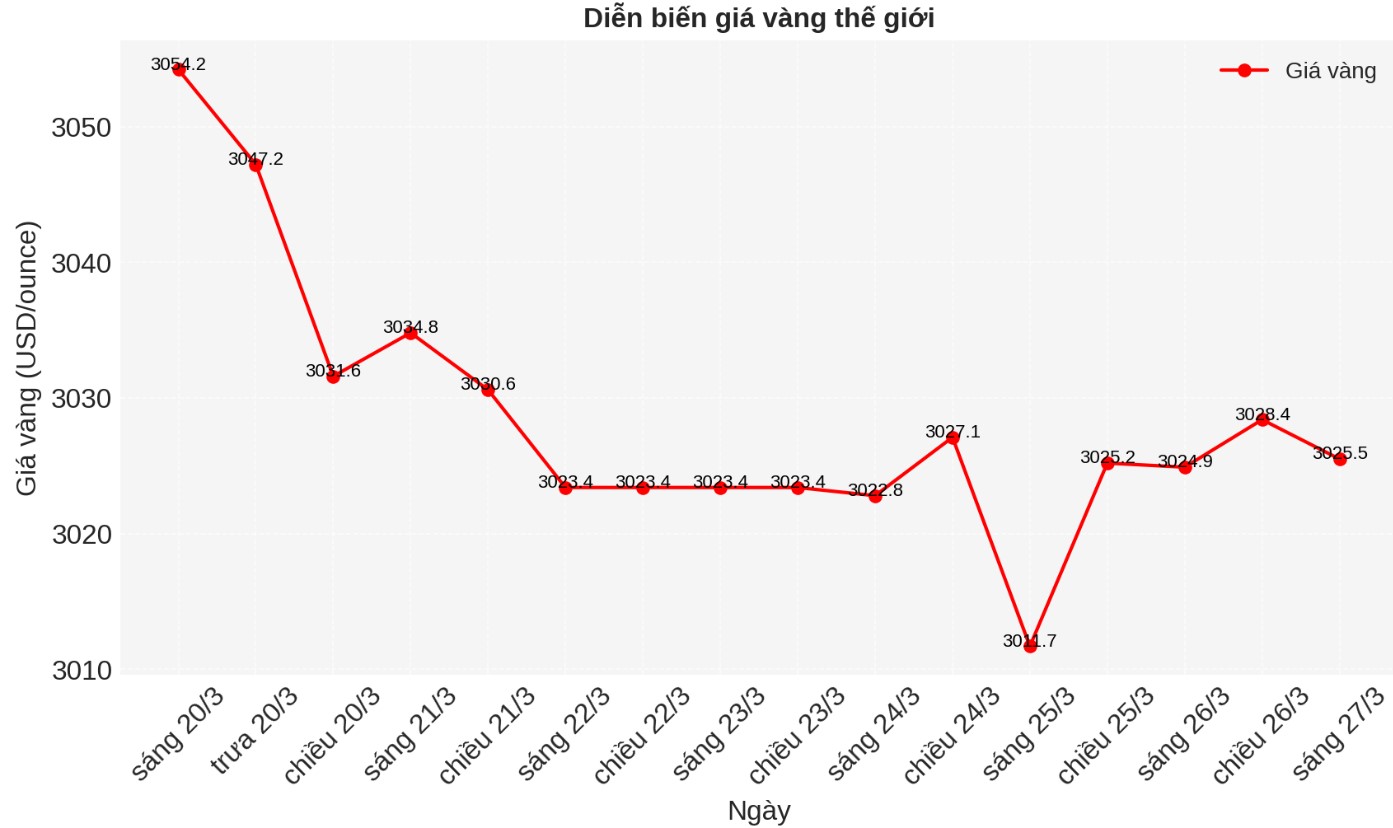Cash flow into ETFs shows the return of Western investors
In an interview with Kitco News, Joseph Cavatoni - Senior Market Strategist at the World Gold Council (WGC) commented that gold is reaffirming its role as an "asset that helps reduce risks" in the context of trade tensions, unpredictable inflation and increased safe-haven demand.
"The rapid increase in gold over the past year has been remarkable. Investors are buying gold again to protect their assets from increasing risks, whether it is geopolitical or political instability," Cavatoni said.
Since the beginning of the year, gold prices have increased by 15%, from $2,500/ounce to $3,000/ounce in just 210 days - a strong increase, pushing gold prices above the 200-day average by three standard deviations. Although technical analysts have identified the $3,040 - $3,050/ounce range as a short-term resistance, Cavatoni said core demand remains strong.

Data from the WGC shows that global gold ETFs recorded 3 billion USD in net cash flow last week - equivalent to about 31 tons of gold. This is the eighth consecutive week that cash flow has entered. Since the beginning of the year, global net cash flow into gold has reached more than 19 billion USD (207 tons), bringing 2025 to the strongest first quarter since 2022.
"The risk is everywhere. Many investors believe that this is the time to return to risk-off assets," said Cavatoni.
He also said that Europe could accelerate in the next six months, especially if the macro outlook worsens or the USD weakens further. "Currently, investors are trying to assess whether the US government's strategy is beneficial or risky for the economy," he said.
Strategic gold
The US government's announcement of a countervailing tariff plan on February 2 could make gold more attractive. While there is no immediate tax threat to gold, Cavatoni stressed the strategic importance of gold as seen in President Donald Trump's executive decree on important minerals.
"Gold is still the nature of a currency and plays an important role in a portfolio. Gold may not be defined as important, but it is strategic," he said.
This decree, within the framework of the Defense Production Act, aims to promote domestic production of minerals related to national security. The mention of gold shows that Washington is increasingly recognizing its importance in finance and geopolitics.

physical gold flows strongly into the US
The amount of gold imported into the US remains high. According to data from Swiss customs cited by WGC's Krishan Gopaul, Switzerland's gold exports in February reached 214 tons. In which the US is the top destination. Since the beginning of the year, Switzerland's gold exports have reached 449 tons, the highest since 2012.
Cavatoni explained that traders continue to move physical gold to the US to support futures contracts in the context of unclear tariffs. "As long as there is absolute certainty about how the tariffs will impact, gold still needs to continue flowing into the US market," he said.
Central banks and investment demand lead the market
Cavatoni stressed that the driver for golds price increase comes from central banks and investors, not from consumers. Jewelry demand in Asia and the Middle East has stagnated due to high prices, retailers have recorded an increase in gold recycling as consumers take profits.
"Investment in gold is on a strong upward trend," he said. "We are seeing insurance companies in China being licensed to invest in gold through the Shanghai Gold Exchange. This is a big shift.
Meanwhile, central bank demand remains stable. China, Poland, Bolivia and many other emerging economies continue to increase gold reserves. "Some countries are even using their gold reserves to support their domestic economies," Cavatoni said.











